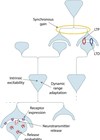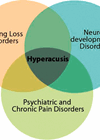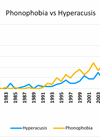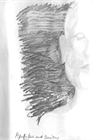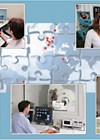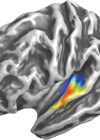Audiology features
Diagnosing and managing somatic tinnitus
Interactions between auditory and somatosensory pathways can lead to interesting tinnitus experiences which can be very bothersome. Dr Sarah Michiels describes her pioneering work in this area, and the possibilities of physiotherapy based therapy. Background Somatic (also called somatosensory) tinnitus...
The role of prediction and gain in tinnitus
Dr Will Sedley is a Clinical Academic Neurologist who has done groundbreaking work in the field of tinnitus mechanisms. Here, he introduces and explains the concepts of prediction and of gain as they relate to troublesome tinnitus. This article focuses...
Internet-based cognitive behavioural therapy for adults with tinnitus
Tinnitus remains one of the most prevalent and distressing audiological symptoms. Although specialist tinnitus services are in high demand, geographical and service constraints result in limited access to these services. Internet-based cognitive behavioural therapy (ICBT) has been developed to provide...
Hyperacusis-related distress and comorbid psychiatric illness
Research suggests that over 50% of patients presenting with hyperacusis also present with some form of psychiatric disorder. With this in mind, Dr Aazh outlines what tools clinicians can use to screen for psychological disorders and what path to take...
Physiological mechanisms of hyperacusis: an update
Hyperacusis is a heterogeneous and complex clinical entity, and proposals about physiological mechanisms should reflect these issues. Ben Auerbach helps us navigate through present knowledge in this area, and proposes future directions for research. Hyperacusis is a debilitating hearing disorder...
Untangling the emotional and physiological aspects of hyperacusis
In hyperacusis, the physiological and the emotional aspects can become deeply entwined. Dr Sarah Theodoroff draws us into her perspectives on this important aspect of the condition. Background Sounds and Emotions The basic act of hearing sounds triggers an emotional...
Collaborating with patients on research priorities in hyperacusis: the James Lind Alliance project
An innovative and inclusive approach to the identification and prioritisation of research questions is to place the views of patients at the heart of the process, and in partnership with clinicians. The application of this to hyperacusis is described by...
Unravelling the mystery of hyperacusis with pain
When a person says that sound causes them pain, how can we understand this, and determine what processes are involved? Bryan Pollard navigates us through what is presently known. Pain has long been underrepresented – and often, completely overlooked –...
Tinnitus and music
Marc Fagelson discusses how not just hearing loss, but tinnitus and hyperacusis and impairments to an individual’s ability to process music can adversely affect one’s quality of life, as well as their overall interactions from a societal and personal perspective....
Unanswered questions in adult ototoxicity associated with platinum-based chemotherapy
Do the potential side-effects on hearing and tinnitus need to be a ‘necessary evil’ of platinum-based chemotherapy? How strong is our evidence base when offering advice to patients and fellow clinicians? David Baguley and his team from the University of...
European funding for the tinnitus research network TINNET
Over 70 million people in Europe experience tinnitus, and for seven million it creates a debilitating condition. Severe tinnitus is often associated with depression, anxiety and insomnia, resulting in an enormous socio-economic impact [1]. It has been estimated that 13...
What does functional neuroimaging tell us about tinnitus?
One of the most common causes of tinnitus is noise exposure, be that either cumulative day-to-day exposure over a lifetime or experience of acute noise trauma such as a loud concert or shooting incident. Observational data indicate that up to...



